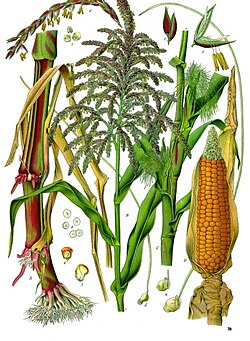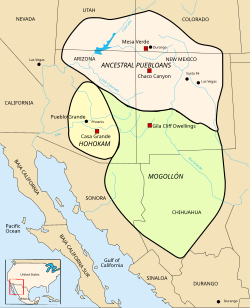| Ancestral Pueblo periods |
|---|
 |
| Archaic–Early Basketmaker Era 7000–1500 BCE |
| Early Basketmaker II Era 1500 BCE–50 CE |
| Late Basketmaker II Era 50–500 |
| Basketmaker III Era 500–750 |
| Pueblo I Period 750–900 |
| Pueblo II Period 900–1150 |
| Pueblo III Period 1150–1350 |
| Pueblo IV Period 1350–1600 |
| Pueblo V Period 1600–present |



The Late Basketmaker II Era (AD 50 to 500) was a cultural period of Ancient Pueblo People when people began living in pit-houses, raised maize and squash, and were proficient basket makers and weavers. They also hunted game and gathered wild foods, such as pinyon nuts.
Contents
- Communities
- Agriculture
- Material goods
- Cultural groups and periods
- Notable Late Basketmaker II sites
- References
- Further reading
The Early and Late Basketmaker II Eras (Pecos Classification) are often described as one "Basketmaker period". It is preceded by the Early Basketmaker II Era, and is followed by the Basketmaker III Era.